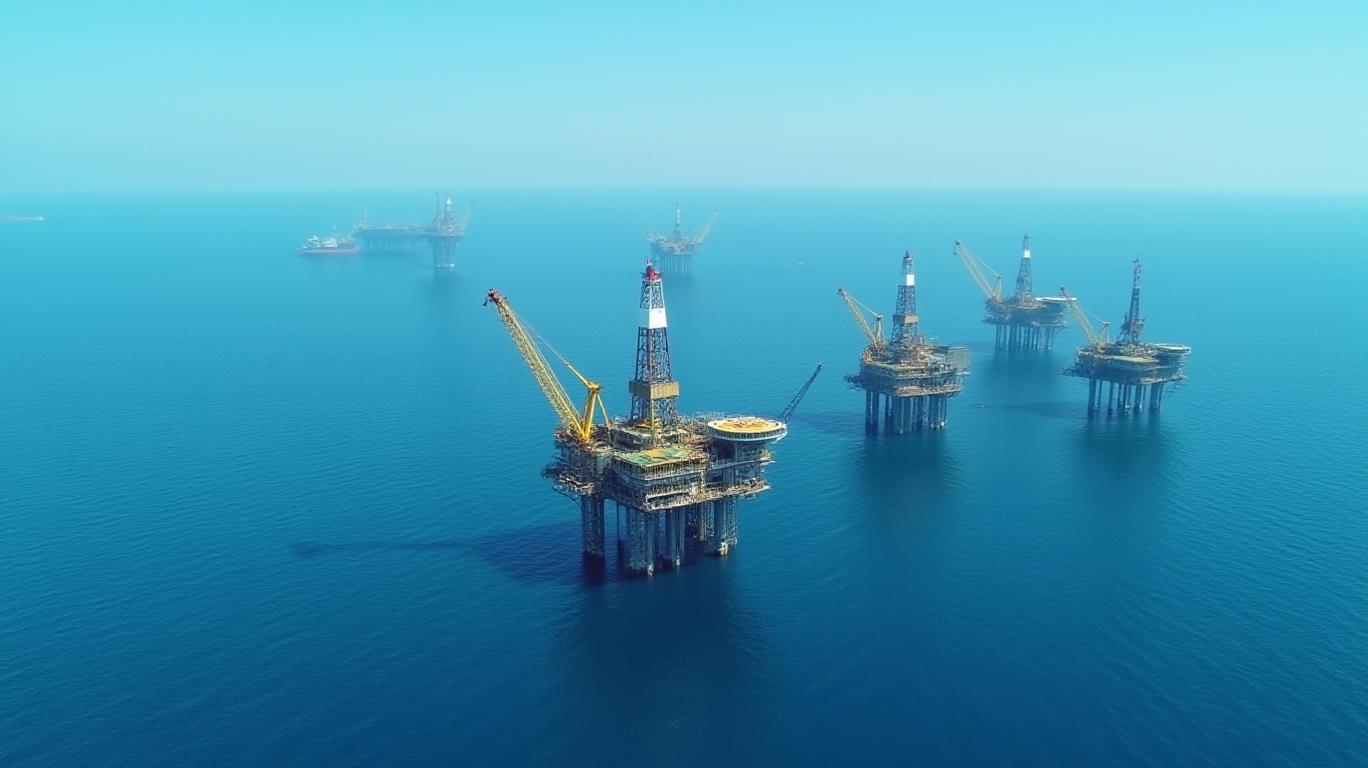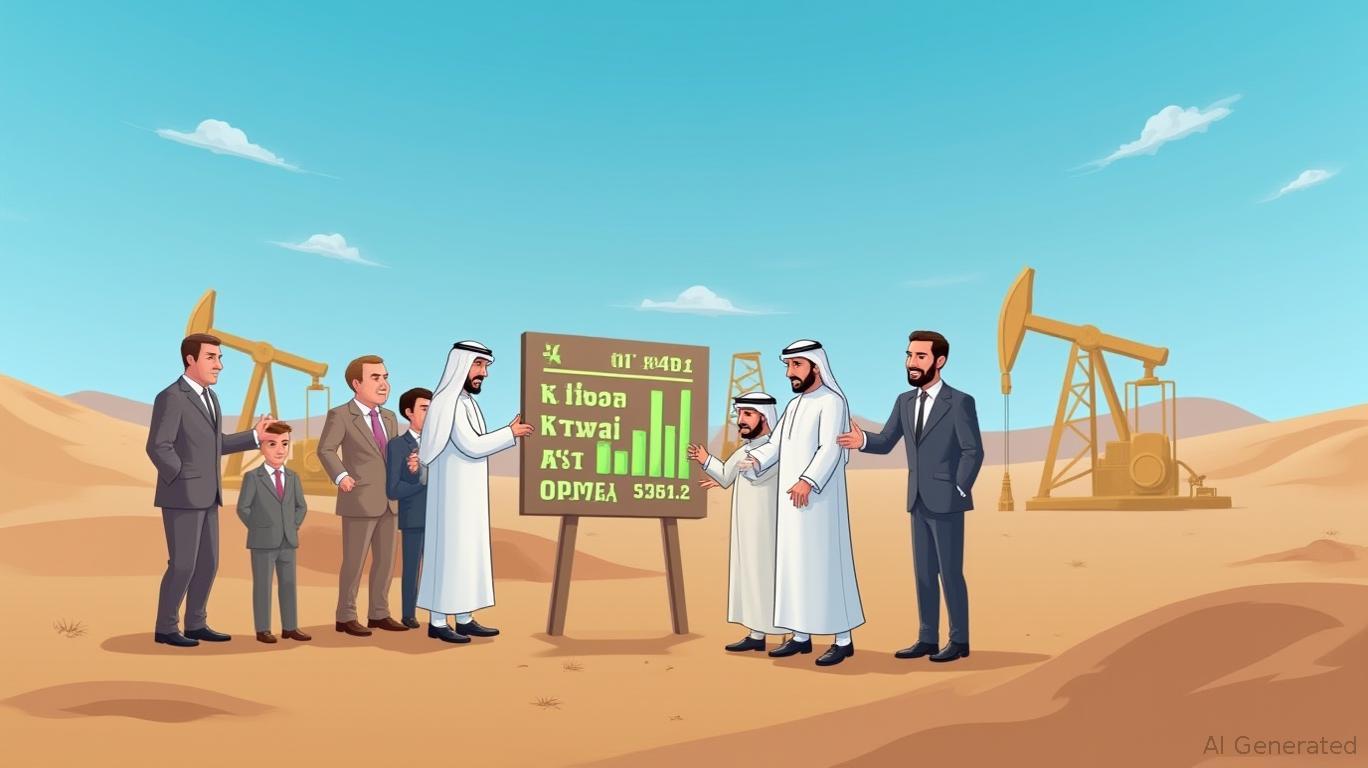OPEC+'s Accelerated Output Hike: A Strategic Shift in Energy Markets
The OPEC+ alliance has embarked on a dramatic recalibration of its oil production policy, accelerating its June 2025 output increase to 411,000 barrels per day (b/d)—tripling its earlier gradual unwinding plan of 137,000 b/d monthly. This decision, announced after an emergency meeting on May 3, reflects a complex interplay of compliance pressures, fiscal imperatives, and geopolitical maneuvering. For investors, the move underscores both the vulnerabilities of energy-dependent economies and the evolving dynamics of global oil markets.
The Decision: Compliance, Capacity, and Compromise
The OPEC+ hike, led by a core group of eight key producers, including Saudi Arabia and Russia, aims to address systemic non-compliance. Overproduction in March alone reached 319,000 b/d above quotas, with cumulative excesses across the group totaling 800,000 b/d by April 2025. The accelerated output legitimizes some of this overproduction while enforcing compensation requirements for non-compliant members like Iraq and Kazakhstan, which must cut output later to balance their excess.
The move also tackles rising spare capacity, now at 5.7 million b/d—up from 3.1 million b/d in early 2023—a buffer the alliance seeks to reduce to avoid overhangs in a market increasingly contested by non-OPEC producers such as the U.S., Brazil, and Guyana.

Market Reactions and Price Projections
Initial market turbulence followed the announcement, with Brent crude dropping 3.5% to $61.54/b—the lowest since 2021—before stabilizing as traders parsed the gradual nature of the increases. Analysts now project Brent prices will hover between $75–85/b by June 2025, a modest 3–5% decline from May levels. The 411,000 b/d hike, representing less than 0.4% of global supply, avoids destabilizing shocks, though it signals a strategic shift toward prioritizing spare capacity over defending specific price targets.
Strategic and Fiscal Implications
For OPEC+ members, the decision is a fiscal tightrope walk. Saudi Arabia, with a fiscal breakeven of $81/b in 2025, faces an annual revenue loss of $7.5 billion for every $1 drop below this threshold. Russia, however, enjoys greater flexibility at its $68/b breakeven, though Western sanctions continue to constrain its oil exports.
Meanwhile, U.S. shale producers—operating at a breakeven of $38–45/b in the Permian Basin—maintain disciplined growth, producing 13.2 million b/d in May 2025. Their cost efficiencies insulate them from OPEC+ volatility, complicating the alliance’s efforts to reclaim market share.
Conclusion: A Balancing Act with Global Consequences
OPEC+’s June output hike marks a pragmatic retreat from rigid production cuts, acknowledging the realities of global supply dynamics and fiscal sustainability. Investors must weigh three critical factors:
1. Price Stability: The projected $75–85/b range for Brent creates a floor for energy equities but leaves OPEC+ vulnerable to further declines if non-compliance or geopolitical risks escalate.
2. Fiscal Risks: Saudi Arabia and other high-breakeven producers face mounting pressure to diversify economies, while Russia’s flexibility may amplify its influence in global markets.
3. Competitive Dynamics: U.S. shale’s resilience and the rise of non-OPEC production highlight the need for investors to consider a broader energy portfolio, balancing exposure to OPEC+ stocks like Saudi Aramco with U.S. majors such as Chevron or ExxonMobil.
In the coming years, OPEC+’s ability to unwind another 2 million b/d of withheld supply without collapsing prices will determine its relevance in a shifting energy landscape. For now, the alliance’s tactical pivot reflects a calculated trade-off between short-term stability and long-term competitiveness—a balancing act with profound implications for global investment strategies.

_41c5d7291749577840008.jpeg)








